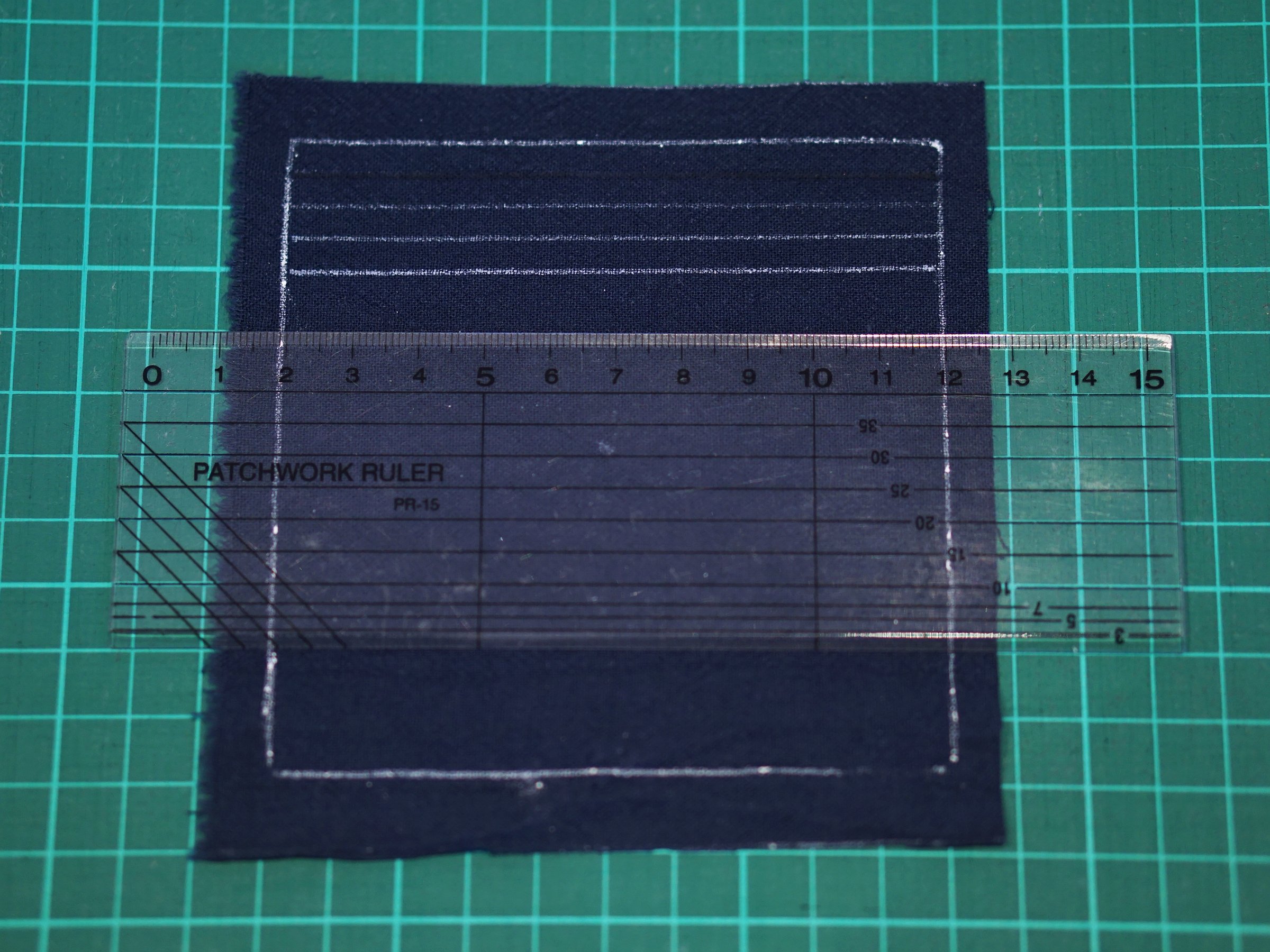Sashiko Basics
This tutorial aims to help beginners to start sashiko with confidence.
1. About Sashiko
Sashiko is a type of traditional Japanese Embroidery. It uses only one type of stitch - the simplest running stitch - to create striking patterns on indigo fabrics. Sashiko means 'little stab' or 'little pierce', a description of the stitching action.
2. Tools & Materials
Sashiko requires very few tools and materials.
Unlike other embroidery, it doesn't require any frame or hoop to be used.
Besides the basic sewing tools such as dressmaking scissors (for fabrics) and small embroidery scissors (for threads), and the basic marking tools to draw the pattern on fabric, all you need for sashiko stitching is sashiko needle, thread, and fabric, which can be stored in a small bag and taken with you anywhere.
For a good experience and results, it is important for beginners to start with special sashiko fabric, needle and thread. These are specially made for sashiko and different from the standard needles and threads for hand sewing and embroidery.
As it can be difficult and sometimes pricey to source these items separately, we have created a few Sashiko starter kits for beginners to experience authentic sashiko. Once you have developed a good idea about sashiko, you will know exactly what you need and be free to explore endless possibilities with your creativity.
3. Drawing Patterns on Fabric
It is often said that sashiko is 70% drawing and 30% sewing. Once the drawing is done, the rest is straightforward.
Some of our sashiko DIY kits have the pattern printed on the fabric (as the pattern is too complicated to be drawn), while others with basic patterns don't. Please check product descriptions to find out which case it is for your interested kit. For the latter, detailed instructions on drawing the pattern on fabric are provided along with heat erasable pen. Please always keep the lid on when the pen is not in use, as the ink would dry out otherwise. Ironing the fabric will remove patterns drawn with heat erasable pen completely - please only do this once you finish sewing.
For those with more experience and want to draft your own pattern, the following three methods will help improve your efficiency and quality of results:

Method 1: Marking fabric with a quilter's ruler

Method 2: Marking fabric with a cutting mat

Method 3: Marking fabric with graph paper/printed grid pattern
4. Sewing Sashiko
• Starting and finishing: You can start sewing with or without a knot. I would recommend starting and finishing with a knot as it is much more secure.
• Stitching: In sashiko, the needle is held still and the fabric placed on it in a pleating action rather than the needle being moved through fixed fabric. Several stitches are made at a time rather than individual stitches one by one. This is why sashiko needle is often longer than normal needles so that more stitches can be done at once. As the fabric is gathered onto the needle, once the needle is full, you will push it through and smooth the fabric and stitches out with your fingers.
However, for beginners, it is completely fine to sew in the way you are most comfortable with. If you would rather make one stitch at a time, go ahead and no one would be able to tell the difference once you are done! Just make sure the thread is not twisted in the stitch, and the stitches are around the same length consistently. Other than that, as long as you follow the pattern, it doesn't really matter how you sew it.






